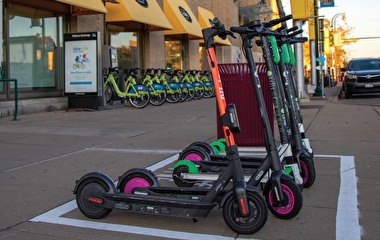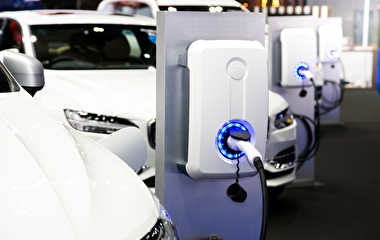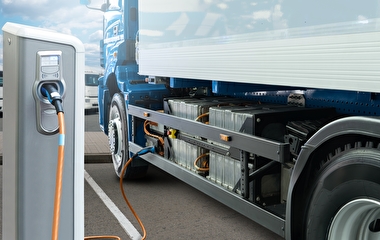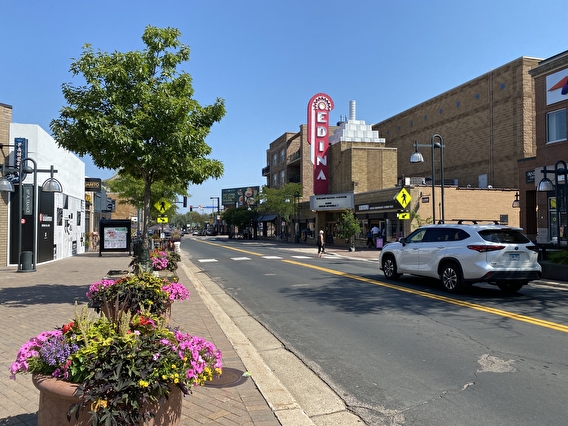
As part of its 2021 Climate Action Plan, the City of Edina is making an effort to increase transit ridership and decrease single-occupancy vehicle use. Toward this end, Edina is exploring an electric-car-sharing program in which electric vehicles (EVs) would be made available for public use.
A series of student-led projects researched the best way to design such a system. Three teams of students in a joint planning and civil engineering class (PA 5232/CEGE 5212) analyzed various factors—including business models, connectivity, and equity—and applied what they learned to Edina. They also reviewed car-sharing systems in the Twin Cities metro and other cities similar to Edina.
Another team, made up of Resilient Communities Project (RCP) fellows, conducted a survey of Edina residents to learn if and how they would use such a program.
Finally, a team of Humphrey School of Public Affairs capstone students conducted focus groups with Edina residents and pulled together the previous research components to recommend how the city could move forward with a car-sharing program.
The project was part of a 2022–2023 RCP partnership, which facilitated and coordinated the component studies. RCP is a program at the U’s Center for Urban and Regional Affairs that connects faculty and students with local government agencies in Minnesota to address strategic projects that advance local resilience, equity, and sustainability.
Work was done under the guidance of Frank Douma (state and local policy researcher) and Lyssa Leitner (adjunct faculty for the capstone course) of the Humphrey School, in collaboration with Grace Hancock, sustainability manager for the City of Edina.
One of the first things students analyzed was the different types of car-sharing models that Edina could potentially use. In a best practices report, one team notes the importance of considering the environment in which a service operates: “There is no one business model that fits all.” Given Edina’s relatively low population—around 53,000 people as of 2020—students recommended a station-based model with designated parking areas for car-sharing vehicles.
Another step was to compare service options: round-trip (trips start and end at the same location) or one-way (customers leave vehicles somewhere else in the service area). Which one the city chooses, students wrote, will depend on its goals—one-way models are easier to implement, but round-trip models are better for targeting specific populations, such as low-income and minority populations.
The connectivity study found that about 5 percent of the population falls below the poverty line. Many of these residents are concentrated in the southeast quadrant of the suburb—and don’t own cars. Although pedestrian and biking facilities are relatively robust, bus connectivity and frequency are limited.
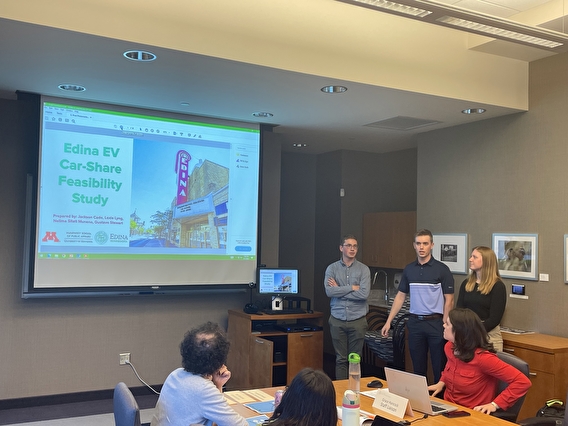
In the equity report, the student team wrote that car-sharing programs can potentially improve the mobility and quality of life for historically disadvantaged communities, but often default to serving wealthy, white, educated populations. Car-sharing services require driver’s licenses, are often run off apps, and often exclusively accept debit or credit cards—making them inaccessible to people without licenses, smartphones, cards, or banks. “If the goal is to help disadvantaged communities in Edina, targeted implementation may be the most equitable route,” the students advised.
Successful case studies showcase the effectiveness of targeted, equitable car-sharing services. The Twin Cities HOURCAR program, for example, has been placing car-sharing hubs in multifamily housing sites to cater to low-income communities. It has also been offering subsidized membership discounts to low-income users (called Access PLUS).
In the survey portion of the project, the team found that only about a third of the 150 respondents expressed interest in using a car-sharing service if they had access to it; the other two-thirds felt that their transportation needs were already being met.
However, the survey team noted that the average responder was white, had a household income of more than $150,000 annually, and owned a car. People who didn’t own cars were underrepresented in the survey, but around two-thirds of the ones who did respond expressed interest in using a car-sharing service. Given the demographic homogeneity of survey participants, the researchers caution, the results cannot be generalized to draw conclusions.
Overall, the teams recommend a focused approach to integrating car sharing that prioritizes equity. A hub-based, round-trip model that locates hubs near biking and pedestrian facilities, as well as the proposed E Line Bus Rapid Transit Line (scheduled to open in 2025), would help fill transit gaps. In the wrap-up feasibility report, they recommend introducing hubs in a phased approach starting in the underserved southeast quadrant of the suburb and partnering with entities such as Xcel Energy and the Twin Cities HOURCAR program.
“The city should consider EV car-sharing a tool in the toolbox for Edina to try to address its transportation emissions and transportation equity gaps,” Hancock says. “Next steps on the city’s end are to keep this information available to compare to other, bigger investments such as micromobility, sidewalk and bike-lane-building accelerations, or more private circulator bus service.”
—Sophie Koch, contributing writer
